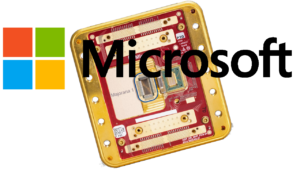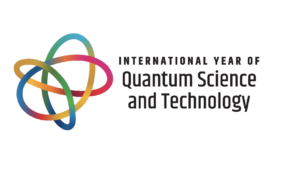Every week scientists around the globe seem to announce another breakthrough that could help lead to the construction of a practical quantum computer. For individuals who have an interest in the subject, but not an intimate working knowledge of the field, the terms used in articles and press releases can be as confusing as the quantum subjects they address. Below are a few of the terms that I’ve run across over the past several years that keep popping up as we get closer to building that elusive quantum computer. Some terms are fairly familiar, like absolute zero, but others are not so well known, like Xmon. This list certainly isn’t exhaustive, but it’s a start to understanding some of the terms that may one day be as common as “bytes” and “chips.”
Absolute Zero — Absolute zero is the lowest temperature that is theoretically possible, at which the motion of particles that constitutes heat would be minimal. It is zero on the Kelvin scale, equivalent to –273.15°C or –459.67°F. In order to increase stability, most quantum computing systems operate at temperatures near absolute zero.
Algorithm — An algorithm is the specification of a precise set of instructions that can be mechanically applied to yield the solution to any given instance of a problem.
Anyon — An anyon is an elementary particle or particle-like excitation having properties intermediate between those of bosons and fermions. The anyon is sometimes referred to as a Majorana fermion but a more appropriate term to apply to the anyon is a particle in a Majorana bound state or in a Majorana zero mode. This name is more appropriate than Majorana fermion because the statistics of these objects is no longer fermionic. Instead, the Majorana bound states are an example of non-abelian anyons: interchanging them changes the state of the system in a way that depends only on the order in which the exchange was performed. The non-abelian statistics that Majorana bound states possess allows them to be used as a building block for a topological quantum computer.
Bose-Einstein Condensate — The Bose-Einstein Condensate is a super-cold cloud of atoms that behaves like a single atom that was predicted by Albert Einstein and Indian theorist Satyendra Nath Bose. Peter Engels, a researcher at Washington State University, explains, “This large group of atoms does not behave like a bunch of balls in a bucket. It behaves as one big super-atom. Therefore it magnifies the effects of quantum mechanics.” Theoretically, a Bose-Einstein condensate (BEC) can act as a stable qubit.
Coherence Time — Coherence time is the length of time a quantum superposition state can survive.
Doped Diamonds — A doped diamond is one into which a defect has been intentionally added. Physicists have discovered that they can can make good use of these defects to manipulating the spin of quantum particles.
Entanglement — Entanglement is a physical phenomenon that occurs when pairs or groups of particles are generated or interact in ways such that the quantum state of each particle cannot be described independently. If you think that is difficult to understand, you’re not alone. Albert Einstein referred to this phenomenon as “spooky action at a distance.”
’Fault-tolerant’ Material —Fault tolerant materials are a unique class of advanced materials that are electrically insulating on the inside but conducting on the surface. Inducing high-temperature superconductivity on the surface of a topological insulator opens the door to the creation of a pre-requisite for fault-tolerant quantum computing. One of those materials is graphene. Interestingly, the edges of graphene basically turn it into a kind of topological insulator that could be used in quantum computers.
Magic State Distillation — Magic State Distillation is the “magic” behind universal quantum computation. It is a particular approach to building noise-resistant quantum computers. To overcome the detrimental effects of unwanted noise, so-called “fault-tolerant” techniques are developed and employed. Magic states are an essential (but difficult to achieve and maintain) extra ingredient that boosts the power of a quantum device to achieve the improved processing power of a quantum computer.
Micro-drum — A micro-drum is a microscopic mechanical drum. It has been reported that physicists at the National Institute of Standards and Technology (NIST) have ‘entangled’ a microscopic mechanical drum with electrical signals confirming that it could be used as a quantum memory. NIST’s achievement also marks the first-ever entanglement of a macroscopic oscillator which expands the range of practical uses of the drum.
Quantum Contextuality — Quantum contextuality is a phenomenon necessary for the “magic” behind universal quantum computation. Physicists have long known that measuring things at the quantum level establishes a state that didn’t exist before the measurement. In other words, what you measure necessarily depends on how you carried out the observation – it depends on the ‘context’ of the experiment. Scientists at the Perimeter Institute for Theoretical Physics have discovered that this context is the key to unlocking the potential power of quantum computation.
Quantum Logic Gates — In quantum computing and specifically the quantum circuit model of computation, a quantum gate (or quantum logic gate) is a basic quantum circuit operating on a small number of qubits. They are the building blocks of quantum circuits, like classical logic gates are for conventional digital circuits. Quantum logic gates are represented by unitary matrices. The most common quantum gates operate on spaces of one or two qubits, just like the common classical logic gates operate on one or two bits. This means that as matrices, quantum gates can be described by 2 × 2 or 4 × 4 unitary matrices. Quantum gates are usually represented as matrices. A gate which acts on k qubits is represented by a 2k x 2k unitary matrix. The number of qubits in the input and output of the gate have to be equal.
Quantum Memory State — Quantum Memory State is the state in which qubits much sustain themselves in order to be of value in quantum computing. To date, these states have proved extremely fragile because the least bit of interference at the quantum level can destroy them. For this reason, most experiments with qubits require particles to be cooled to near absolute zero as well as heavy shielding.
Quantum Register — A collection of n qubits is called a quantum register of size n.
Qubit — A quantum bit or qubit operates in the weirdly wonderful world of quantum mechanics. At that level, subatomic particles can exist in multiple states at once. This is multi-state capability is called superposition. One commonly used particle is the electron, and state normally used to generate a superposition is spin (spin up could represent a “0” and spin down could represent a “1”. Additional qubits can be added by a process called entanglement. Theoretically, each extra entangled qubit doubles the number of parallel operations that can be carried out. MIT’s Seth Lloyd notes, “We could map the whole Universe — all of the information that has existed since the Big Bang — onto 300 qubits.”
Spin — Spin sometimes called “nuclear spin” or “intrinsic spin” is the quantum version form of angular momentum carried by elementary particles, composite particles (hadrons), and atomic nuclei. Having said that, the website Ask a Mathematician/Ask a Physicist states, “Spin has nothing to do with actual spinning. … Physicists use the word ‘spin’ or ‘intrinsic spin’ to distinguish the angular momentum that particles ‘just kinda have’ from the regular angular momentum of physically rotating things.”
Superposition — Superposition is an ambiguous state in which a particle can be both a “0” and a “1”.
Topological Qubit — Topological qubits rely on a rare and extraordinarily finicky quantum state; however, once formed, they theoretically would behave like sturdy knots — resistant to the disturbances that wreck the delicate properties of every other kind of qubit.
Transmon — A transmon is a superconducting loop-shaped qubit that can be created at extremely low temperatures and, at the moment, up to five of them can be linked together. A standard transmon can maintain its coherence for around 50 microseconds – long enough to be used in quantum circuits. What’s more, coherence times twice that length, and transmon arrays of 10 to 20 loops, are supposedly just around the corner.
Xmon — An Xmon is a cross-shaped qubit created by a team at the University of California, Santa Barbara. The team found that by placing five Xmons in a single row (with each qubit talking to its nearest neighbor) they were able to create a stable and effective quantum arrangement that provides the most stability and fewest errors. Like most other qubits, the Xmon must be created at temperatures approaching absolute zero.




